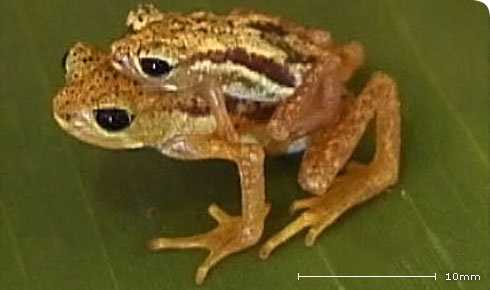Behaviour
- Strongly philopatric
- Confined to spray-zone wetland area
- N. asperginis not found in nearby forest which is occupied by a near-relative N. tornieri, which in turn does not penetrate far into the spray-zone wetlands
Migration
None recorded. There is no evidence of migration movements and little would be expected given the nature of the terrain and the dependency upon the spray zone and the unique vegetation system associated with this species. Consequently there was probably no or very limited opportunity for genetic exchange between populations.
Associations
No information presently available on predator/prey relations, parasites or habitat specific dependencies, save the suggestion from gut contents analysis of a toad indicating that it fed on a wide range of insects and a mite, exemplifying it was not a specialist feeder in the wild (Poynton et al., 1998).
Diseases
The fungal disease chytridiomycosis was confirmed in dead specimens of Kihansi toad in 2003.
The introduction of chytrid fungus into its habitat was one factor responsible for the Kihansi spray toad’s possible extinction in the wild (announced recently, formerly regarded as critically endangered).
